The Process of Ethnocentralizing the Concept of Ecological Agroalimentary Products for the Romanian Urban Consumer
Abstract
:1. Introduction
2. Methodology
- We are dealing with an increased responsibility of the Romanian urban consumer regarding the purchase of food products; and
- This increase of responsibility is not decisively determined by the ecologically certified products, but rather by certain local reactions toward the globalization phenomenon. These reactions are closely connected with the imagining of healthy alimentation and with the discourses that have an influence on trust in what concerns food safety and security.
- The consumption community and the ethnological contexts of purchasing food products.
- The symbolic systems of consumption and health together and the interactions between them.
- Constituting the ecological concept as a legitimizing narrative of the interaction between the symbolic systems of consumption and health.
- Resemanticization of the ecological concept in the conceptual zone of traditional, local, and peasant products.
3. Preliminary Data
3.1. Reductionism in Understanding the Ecological Agroalimentary Product
- It reduces the importance of the short food supply chains in terms of food safety and security; and
- It places the entirety of conventional agriculture in opposition to sustainability and durability.
- Resemanticization of the ecological concept in the traditional, local, and peasant areas (ethnocentralization of the ecological concept).
- Raising the importance of memory and sensorial impact in the purchase decision of ecological products.
3.2. The Symbolic System of the Urban Consumption of Food Products
- a)
- In the case of urban consumers from Romania, the food supply sources are as follows: hypermarkets, supermarkets, farmers’ markets, wholesale markets, specialized shops, online shops, producers’ shops or stands, fairs, gastronomic festivals and events, brunches organized by producers, mobile markets, straight from the farmgate, or other forms of innovative short food chains of supply. The largest percentages on the food product consumption are registered in the retail shops and farmers’ markets.
- b)
- The metropolitan territorial organization is relatively identical in Romania. Hence, in what concerns the purchase centers of agroalimentary products, their location is quite the same in each town/city in Romania. The hypermarkets are generally located at the outskirts of a city/town, while supermarkets and farmers’ markets are found in the busy and populated areas [18]. In the case of metropolises, almost every neighborhood has its own farmers’ market and, at least, one supermarket.At the same time, as Cristian Dragoş and Vincenţiu Vereş state, at present, in Romania, farmers’ markets still occupy a privileged position and remain competitive through price, proximity, freshness, and quality of the agricultural products, and also in the range of agricultural products [19]. Regarding the smaller cities/towns, the presence of supermarkets, malls, or hypermarkets can produce a recreational type of consumption phenomenon or display of social prestige, behaviors that go beyond the simple motivation of going shopping for supply reasons.
- c)
- Concerning the anthropology of the visit paid to the supermarket, it should be highlighted that urban Romanians are more daily shoppers than weekly ones. The supermarket purchase reveals a rather completing behavior of the daily needs than that of a long-term supply. This phenomenon can also be influenced by the following facts: supermarkets are generally located at a short-distance walk/drive from the consumers’ dwelling; most supermarkets are open from Monday to Sunday inclusive, and from early hours in the morning (some as early as 6 a.m.) till late evening (10 p.m.). The long-term purchase is generally made in the farmers’ markets.
- d)
- The extra-urban peasant fairs are increasingly seldom visited by the urban consumer. They are mainly spaces serving for peasant exchanges. There are also the so-called wholesale markets located in the urban areas and which are practically taken by storm every autumn when most Romanian consumers buy large quantities of agroalimentary products to prepare home-made canned food for winter (jams, canned vegetables, tomato juice, fruit compotes, and many others). Many of the Romanian urban consumers are still preparing these home-made canned foods (before 1989, during the communist regime, this was a frequent and necessary activity for almost any Romanian household). This aspect can be explained by either tradition or due to the fact that the products offered by the big producers do not satisfy these buyers in terms of taste or because the traditional products offered by the small producers are considered too expensive.
- e)
- To better understand the subjective and objective determinations of the food consumption, a few clarifications should be made in terms of what concerns the consumption context of the basic food products.Bread—The product always present on a Romanian kitchen table is bread. Romanians are one of the largest consumer groups of bread worldwide [20], and they occupy first place in Europe on bread consumption [21].Concerning the agricultural areas of cereals cultivated in an ecological system, wheat occupies the first position in Romania, registering over 45,000 ha in 2017 [22]. Both bakers’ wheat (Triticum aestivum) and durum wheat (Triticum durum) used for making bread and pasta are cultivated in Romania.Despite these facts, ecologically certified bread is hardly found in the big retail shops. It is commonly present in specialized stores and less easily sold. Most varieties for sale fall within the category of white bread (around 65% out of the total of bread consumption) [23]. This is a purchase behavior that seems largely motivated by taste, and not one related to nutritional values.Meat—Chicken and pork are among other food products often purchased by the Romanian urban consumer. Beef is also highly appreciated, but it is less consumed due to its relatively costly price. Similar to the case of bread, there is a relatively low offer of ecologically certified precooked meats products.Eggs—Romanian cuisine values eggs as basic products that are either consumed by minimum cooking (boiling or frying) or as ingredients for many traditional recipes. In the retail shops, the offer of ecologically certified eggs is quite well-supplied. The 0 (zero)-marked eggs come from ecological production as there are strict regulations related to the rearing areas, wellbeing standards, fodder, and medical treatments administered to the laying hens (the birds are fed with ecologically certified, pesticide, and hormone-free fodder only, without antibiotics or other synthesis substances) [24].Fish—In Romania, fish consumption is quite significant, although the Romanian consumer does not excel at this food chapter. Fish farmed in an ecological system is barely present on the market. However, the Romanian consumer chooses freshly caught fish when they wish to buy a healthy product.Dairy products—Related to cheese, the variety is considerably lower than that of other countries with long traditions such as France, Italy, Switzerland, Spain, and others. Romanians, except for some geographical regions, do not have a strong tradition in matured cheeses. The offer of ecologically certified products is also low. The purchase decision is mainly focused on traditional, local, or peasant products. In comparison to other European gastronomical cultures, sour cream is among the most consumed dairy products in Romania. Yogurts register high percentages in preferences along with milk, which has the widest offer of ecologically certified dairy products. Butter is another highly appreciated dairy product in Romanian cuisine.Maize—Maize flour is largely used as a prime ingredient in “mămăligă” (a sort of maize porridge similar to Italian polenta). “Mămăliga”, quite legitimately, has often been associated with the history of Romanians [25]. Gastronomically speaking, “mămăliga” successfully replaces bread in association with foods based on cheese, eggs, or meat (and often combined).Romania is also an important maize producer for both human and animal consumption and, recently, as a novelty, for bio fuel production [26].The maize crop in the ecological system occupies the second position after wheat (approximately 20,000 ha cultivated in 2017). However, the yield is largely used as fodder for the animals raised ecologically [22].Herbs—In Romania, the most purchased herbs are parsley, lovage, dill, and lettuce. Green onion and garlic are also associated with herbs and are often consumed. Ecologically grown herbs like parsley, lovage, and dill are entirely absent. There is a rather limited offer of ecologically certified lettuce.Tomatoes—These are one of the most symbolically loaded aliments among the agroalimentary products for the Romanian consumer. Tomatoes are chiefly consumed during summer as the consumers favor the Romanian varieties that are considered much tastier than the imported ones. Tomatoes can be generally bought from the farmers’ markets and the most important purchase criteria are the following: peasant or rural nature, variety, and area where they were grown. There are offers of ecologically certified tomatoes in the retail shops, but, in spite of this, the tomatoes labelled as Romanian peasant product are preferred during the growing season. On quite a few occasions, the Romanian urban consumer can be heard talking about “imported or supermarket tomatoes that taste like rubber”.Other vegetables—Romanians frequently eat potatoes, beans, carrots, celery, parsnip, onion, garlic, bell peppers, red peppers, hot peppers, eggplants, marrows, and cucumbers. The native peasant products are generally favored in the case of these vegetables. The offer of ecologically certified products is barely present on the market.Fruit—These are among the most consumed products (fresh, dried, frozen, or canned). The most diversified offer of ecologically certified fruit is for apples, pears, strawberries, blueberries, raspberries, sea buckthorn, citrus fruits, and bananas.Honey—Romanian honey is a highly successful product both nationally and internationally. It is also one of the high-quality products obtained in Romania. The offer of ecologically certified honey and apicultural products is quite generous.Edible Oils—The consumption of cooking oil is fairly high as Romanian gastronomy has many recipes that involve tempering and frying. The most consumed oil is sunflower.Beer and wine—In terms of legislation, in Romania, beer and wine fall within the category of aliment. Concurrently, the beer consumption is quite high in Romania (1.4295 L per capita monthly, Table 1), which places Romania in seventh position in the world. However, ecologically certified beer is barely present here. The quality beer consumption is as high as 50% [27]. Regarding the wine consumption, the Romanians register as drinking 0.887 L per capita monthly (Table 1). The ecologically certified wine offer is much more diversified and generous in Romania.To visualize the data on consumption, Table 1 presents the processed data provided by the Romanian National Institute of Statistics [28].In Romania there are [22]:
- Sixteen ecologically certified units for manufacturing grain mill products, starches, and starch products and nine similar units for manufacturing bakery and flour products;
- Five ecologically certified plants for meat processing, preservation, and production and also three similar plants for processing and preservation of fish and shellfish;
- Twenty-two ecologically certified facilities for manufacturing dairy products; and
- Eleven ecologically certified units for producing vegetable oils and fats as well as animal fats.
- f)
- In Romania, as happens elsewhere worldwide [29], fruit and vegetables are apparently the most sought products among the ecological alimentary goods. On the other hand, in what concerns the availability of the ecological agroalimentary products on the Romanian market, as a general observation, it can be stated that most food products are imported [30].
- g)
- On the whole, the Romanian consumer is an occasional buyer that interested in all categories of alimentary products and also a seasonal one with respect to fruit and vegetables.
- h)
- Concerning this gastronomical context, the lack of ecological certification or the low number of ecological certifications on certain food product categories is further determined by the perception of the Romanian consumer who regards local, traditional or peasant products as highly valuable in terms of prophylaxis, nutrition, sentiment (taste memory), or sensorial perception (taste, smell, appearance). Hence, the small producers would rather not invest in ecological certification since they are aware of their market advantage, as long as they are local producers and their products fit into the segment of traditional or rural products.
3.3. The Symbolic System of Health
3.4. Debates and Interpretation
- Most subjects have a fairly limited comfort zone. The financial resources provide limitations for a living where the basic necessities of an individual and their family are met.
- Most respondents have not crossed the minimum comfort limit toward prosperity.
- We can conclude that most subjects are in a challenging situation where they constantly struggle to make ends meet. Income and expenses are monthly challenges for most subjects whether they are married or single, and with or without children in care.
- Group 1. In quadrant 4, bottom left, we can observe a strong correlation between those who buy ecological agroalimentary products based on label and those who think that the ecological agroalimentary product means an ecologically certified product.
- Group 2. Especially in the core area of the figure, we can observe relatively strong correlations between those who think that the ecological agroalimentary product represents an organic or bio product, and those whose main purchase reason lies in the lack of additives, chemical treatments, or genetic modifications.
- Group 3. In quadrants 2 and 3 (left side), we can observe that the group of those buying ecological agroalimentary products based on taste, appearance, and smell shares similarities with those who consider the ecological agroalimentary product as a local, traditional, or countryside product.
- It comes out of the exclusive conceptual zone of being ecologically certified.
- It is no longer perceived as a necessarily expensive product in comparison with conventional products.
- It no longer has an inaccessible nature for those with small or medium incomes.
- A semantic contamination occurs between the healthy product and ecological product in both directions.
3.4.1. Legitimizing Narratives of Certification Decentralization
3.4.2. Legitimizing the Narratives of Accessibility
3.4.3. Legitimizing Narratives of Overlapping the Concept of an Ecological Product with the Concept of a Healthy Product
4. Conclusions
- From a symbolic point of view, the local product has a heavy impact on the consumer’s mentality, at least as powerful as that of an ecologically certified product.
- The short food supply chains have more weight for the purchase decision, although the collective mentality does not currently perceive them in the technical acceptance of this concept.
- To increase the level of trust in the ecologically certified product, the entrepreneurial environment should exert pressure on the governing authority with respect to developing public education programs and increasing the rigorousness of controls on the conditions of producing and distributing these products.
- The entrepreneurial environment should also develop abilities to promote and distribute other types of products which, by ethics of production and distribution, can prove as valuable as the ecologically certified products.
Author Contributions
Funding
Acknowledgments
Conflicts of Interest
References
- Bourdieu, P. Distinction: A Social Critique of the Judgement of Taste; Harvard University Press: Cambridge, MA, USA, 1987. [Google Scholar]
- Baudrillard, J. The Consumer Society: Myths and Structures; SAGE Publications Ltd.: Thousand Oaks, CA, USA, 2017. [Google Scholar]
- Veblen, T. Conspicuous Consumption; Penguin Books: London, UK, 2006. [Google Scholar]
- Campbell, C. The Romantic Ethic and the Spirit of Modern Consumerism; Palgrave Macmillan: London, UK, 2018. [Google Scholar]
- Thompson, P.B.; Kaplan, D.M. Encyclopedia of Food and Agricultural Ethics; Springer: New York, NY, USA, 2014. [Google Scholar]
- Lipovetsky, G. Fericirea Paradoxală: Eseu Asupra Societăţii de Hiperconsum; Polirom: Iasi, Romania, 2007. [Google Scholar]
- Butu, A.; Vasiliu, C.D.; Rodino, S.; Brumă, I.-S.; Tanasă, L.; Butu, M. The Anthropological Analysis of the Key Determinants on the Purchase Decision Taken by the Romanian Consumers Regarding the Ecological Agroalimentary Products. Sustainability 2019, 11, 4897. [Google Scholar] [CrossRef]
- The R Project for Statistical Computing. Available online: https://www.r-project.org/ (accessed on 30 August 2019).
- R Core Development Team. A Language and Environment for Statistical Computing; R Core Development Team: Vienna, Austria, 2013. [Google Scholar]
- RStudio Team (RStudio Inc.). RStudio: Integrated Development Environment for R; RStudio Team: Boston, MA, USA, 2019. [Google Scholar]
- Kassambara, A.; Mundt, F. Package ‘Factoextra’: Visualization of a Correlation MatrixExtract and Visualize the Results of Multivariate Data Analyses. Available online: https://rdrr.io/cran/factoextra/ (accessed on 28 September 2019).
- Lê, S.; Josse, J.; Husson, F. FactoMineR: An R Package for Multivariate Analysis. J. Stat. Softw. 2008, 25, 1–18. [Google Scholar] [CrossRef]
- Wickham, H. Ggplot2: Elegant Graphics for Data Analysis; Springer: New York, NY, USA, 2016. [Google Scholar]
- Lyotard, J.-F. Postmodern Condition. The Postmodern Condition: A Report on Knowledge.; University of Minnesota Press: Minneapolis, MN, USA, 1984. [Google Scholar]
- Carrete, L.; Castaño, R.; Felix, R.; Centeno, E.; González, E. Green consumer behavior in an emerging economy: confusion, credibility, and compatibility. J. Consum. Mark. 2012, 29, 470–481. [Google Scholar] [CrossRef]
- Chryssochoidis, G. Repercussions of consumer confusion for late introduced differentiated products. Eur. J. Mark. 2000, 34, 705–722. [Google Scholar] [CrossRef]
- Horne, R.E. Limits to labels: The role of eco-labels in the assessment of product sustainability and routes to sustainable consumption. Int. J. Consum. Stud. 2009, 33, 175–182. [Google Scholar] [CrossRef]
- Săgeată, R.; Bucura, C.; Bud, M.; Toderaş, T.; Gherasim, V. Development of the Tertiary Sector and Its Land-Use Impact in the Built-up Area. Case-Study: Commercial Services in Romania. Int. J. Energy Environ. 2011, 5, 47–56. [Google Scholar]
- Dragoş, C.; Vereş, V. Romanian Farmers’ Market. A Multinomial Logit Model Approach. Zb. Rad. Ekon. Fak. U Rijeci Časopis Za Ekon. Teor. I Praksu 2007, 25, 291–308. [Google Scholar]
- Petrovici, D.A.; Ritson, C. Food Consumption Patterns in Romania. Br. Food J. 2000, 102, 290–308. [Google Scholar] [CrossRef]
- ROMPAN: Consumul de Paine in Romania a Scazut in Ultimul Deceniu, Dar Inca se Mentine Peste Media Europeana. Available online: https://www.wall-street.ro/articol/Social/236111/rompan-consumul-de-paine-a-scazut-la-82-de-kilograme-pe-locuitor-romanii-se-indreapta-catre-produse-de-calitate.html#gref (accessed on 30 September 2019).
- Hicea, N.S. MADR/Direcția pentru A. J. C. Contribuția Tehnologiei La Dezvoltarea Agriculturii Ecologice Din România. Available online: https://www.transilvaniabusiness.ro/2019/03/25/contributia-tehnologiei-la-dezvoltarea-agriculturii-ecologice-din-romania/ (accessed on 28 September 2019).
- Piaţa Pâinii, Între Tradiţie şi Inovaţie—Arta Alba. Available online: https://artaalba.ro/piata-painii-intre-traditie-si-inovatie/ (accessed on 28 September 2019).
- Oua Ecologice. Available online: http://www.ouaecologice.ro/index.php/despre-noi/2-page/2-oua-ecologice (accessed on 28 September 2019).
- Suciu, A.I.; Culea, M. The Risk of Losing National Identity in the Twenty-First Century Romania, or National Identity from Adaptation to Self-Censorship. Khazar J. Humanit. Soc. Sci. 2015, 18, 13–34. [Google Scholar]
- Jean Vasile, A.; Raluca Andreea, I.; Popescu, G.H.; Elvira, N.; Marian, Z. Implications of Agricultural Bioenergy Crop Production and Prices in Changing the Land Use Paradigm-The Case of Romania. Land Use Policy 2016, 50, 399–407. [Google Scholar] [CrossRef]
- Cozmei, V. Consumul de Bere în România. Available online: https://economie.hotnews.ro/stiri-companii-23077937-consumul-bere-romania-85-litri-cap-locuitor-2018-berea-fara-alcool-creste-30-iar-berea-pet-scade-pentru-prima-data-sub-50-din-piata-locala.htm (accessed on 29 September 2019).
- Coordinates of living standard in Romania. Population income and consumption in 2015, 2016, 2017, 2018 —National Institute of Statistics, Romania. 2019. Available online: http://www.insse.ro/cms/en/tags/coordinates-living-standard-romania-population-income-and-consumption (accessed on 24 October 2019).
- Padel, S.; Foster, C. Exploring the Gap between Attitudes and Behaviour: Understanding Why Consumers Buy or Do Not Buy Organic Food. Br. Food J. 2005, 107, 606–625. [Google Scholar] [CrossRef]
- Vietoris, V.; Kozelová, D.; Mellen, M.; Chreneková, M.; Potclan, J.E.; Fikselová, M.; Kopkáš, P.; Horská, E. Analysis of Consumer Preferences at Organic Food Purchase in Romania. Pol. J. Food Nutr. Sci. 2016, 66, 139–146. [Google Scholar] [CrossRef]
- Rusali, M.; Gavrilescu, C. Competitive Advantages and Disadvantages in Romania’s Agri-Food Trade-Trends and Challenges. In Proceedings of the International Congress, Ghent, Belgium, 26–29 August 2008. [Google Scholar]
- Ungureanu, M.I.; Gheorghe, A.; Voinea, Ş.A. Patients Are Denied Care Because of Corruption in Romania. Lancet 2017, 230, 2139. [Google Scholar] [CrossRef]
- Percepții Asupra Sistemului Medical Românesc și Asupra Asigurărilor Private de Sănătate. Available online: http://www.ires.com.ro/articol/152/percep-ii-asupra-sistemului-medical-romanesc-și-asupra-asigurarilor-private-de-sanatate (accessed on 28 September 2019).
- Mihăilescu, V. Etnogeneză Și Țuică; Polirom: Iasi, Romania, 2018. [Google Scholar]
- Seale, C. Health and Media: An Overview. Sociol. Heal. Illn. 2003, 25, 513–531. [Google Scholar] [CrossRef]
- Jayne, M. Cities and Consumption (Routledge Critical Introductions to Urbanism and the City); Routledge: London, UK; New York, NY, USA, 2006. [Google Scholar]
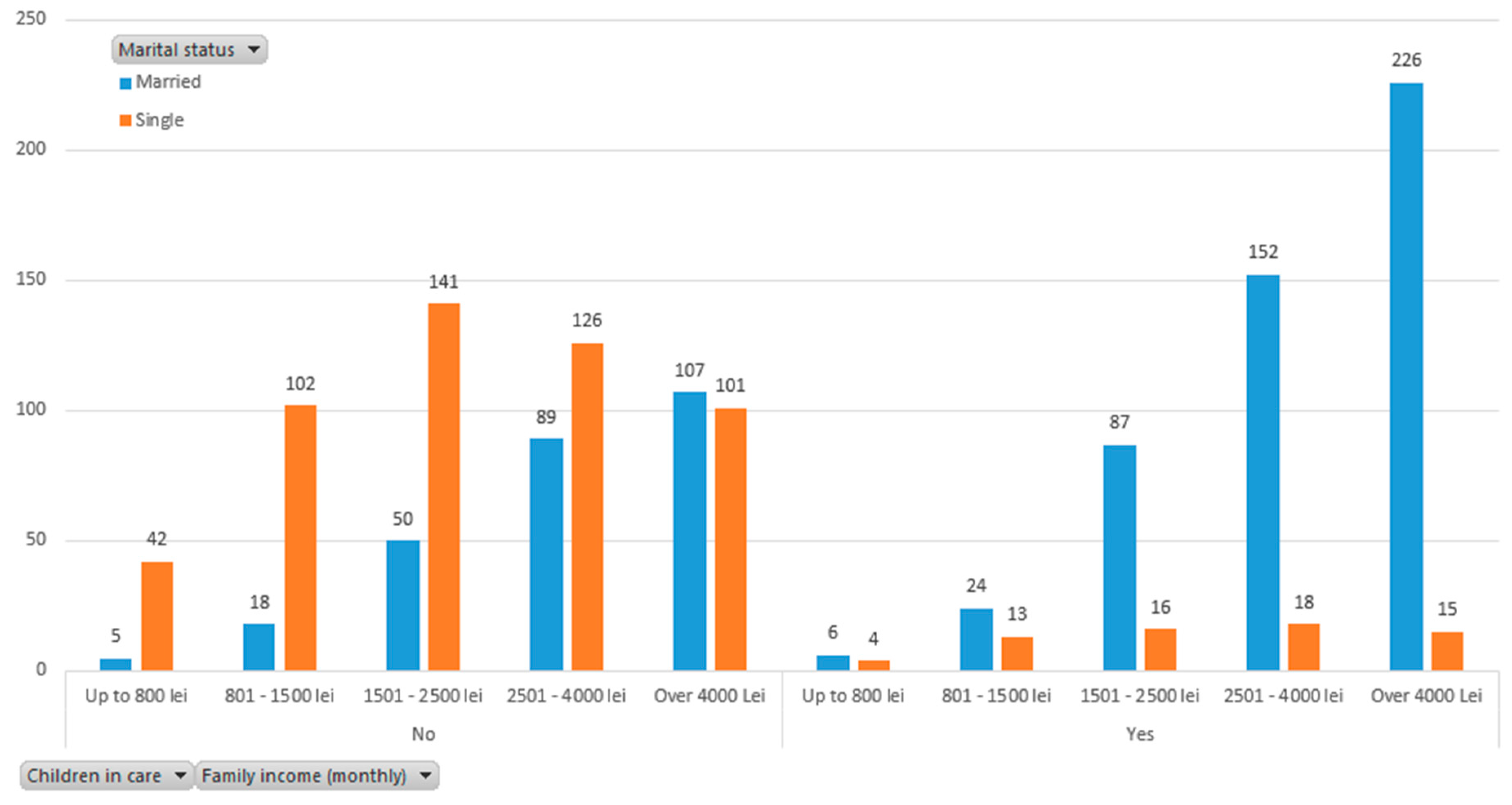
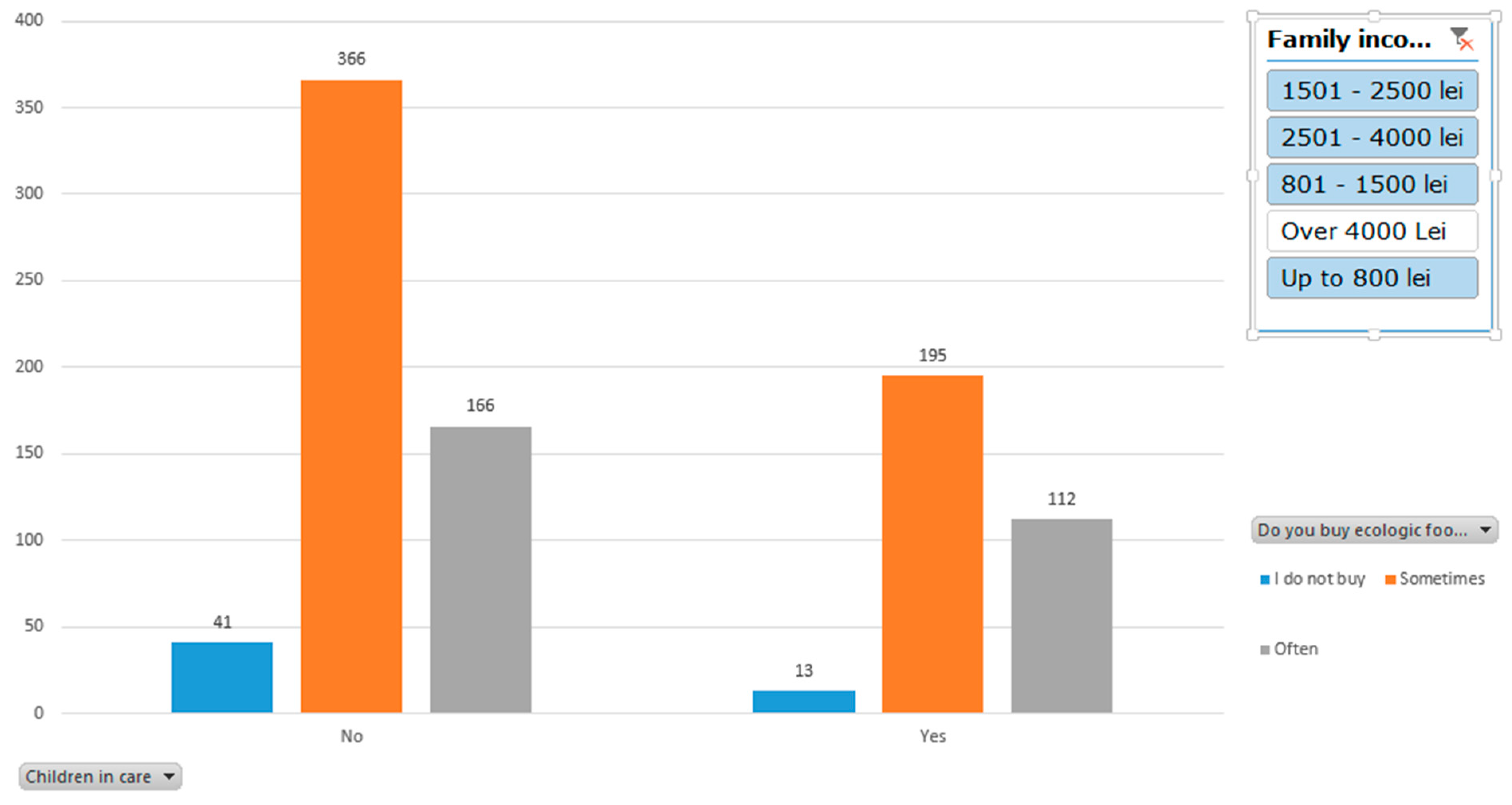
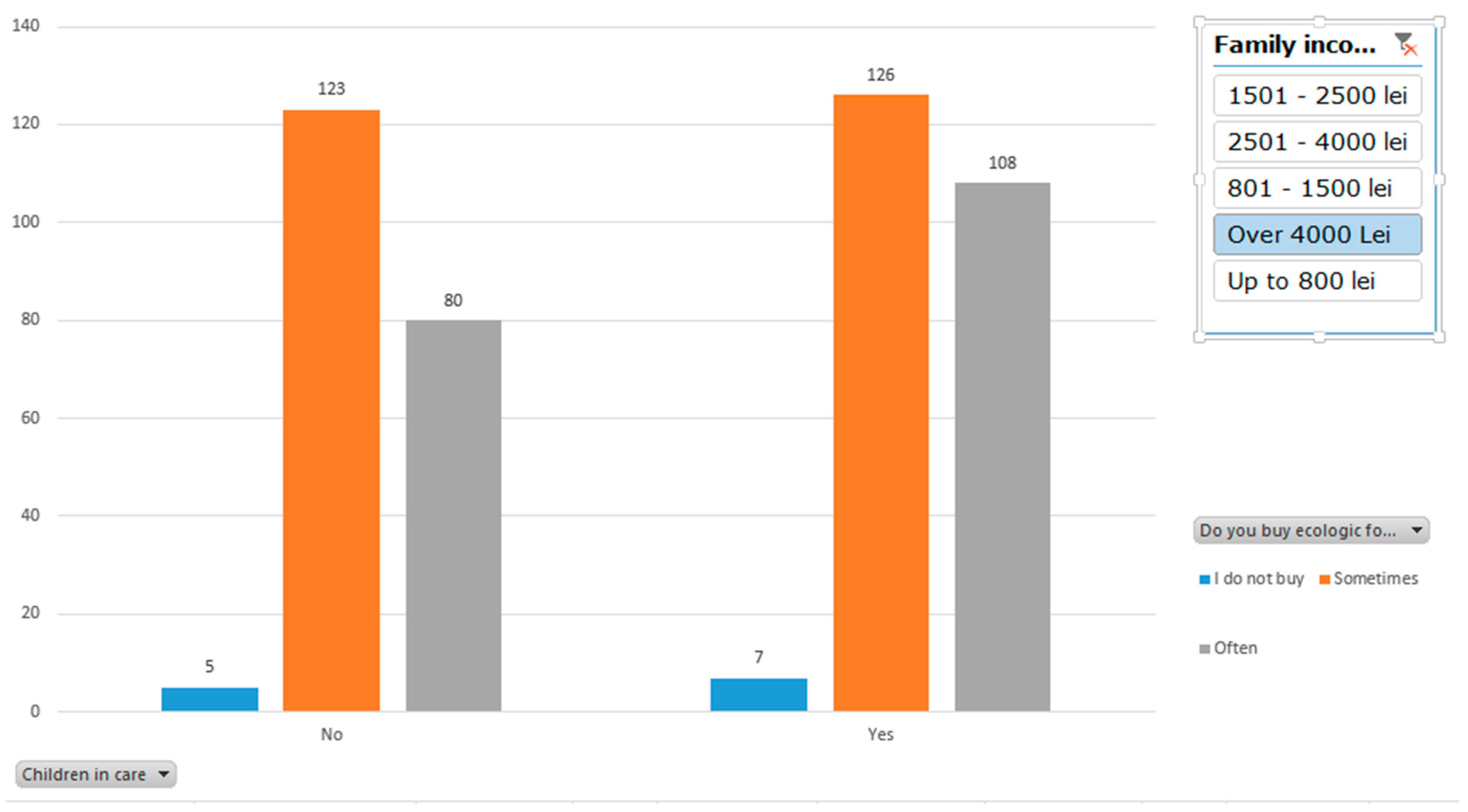
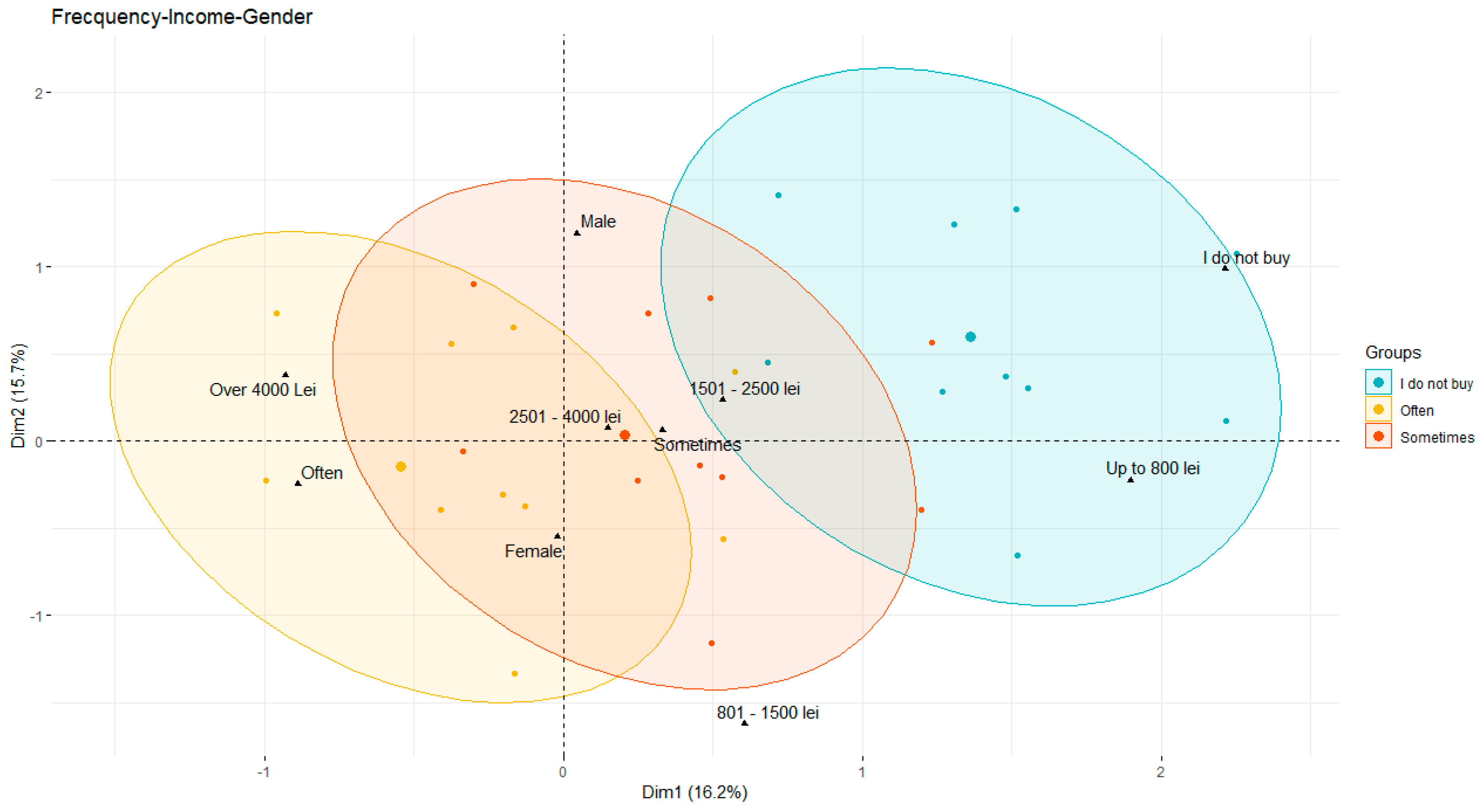
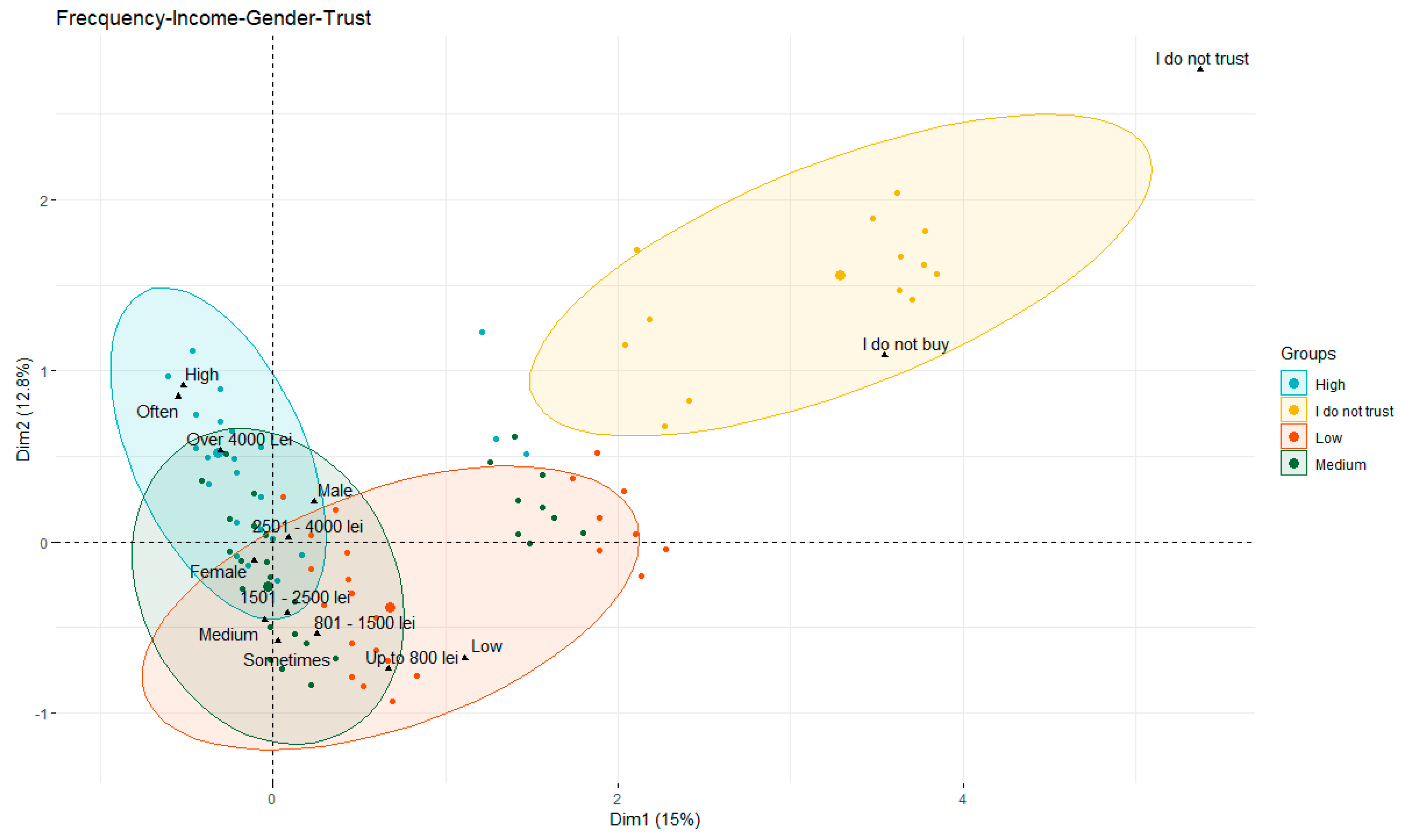
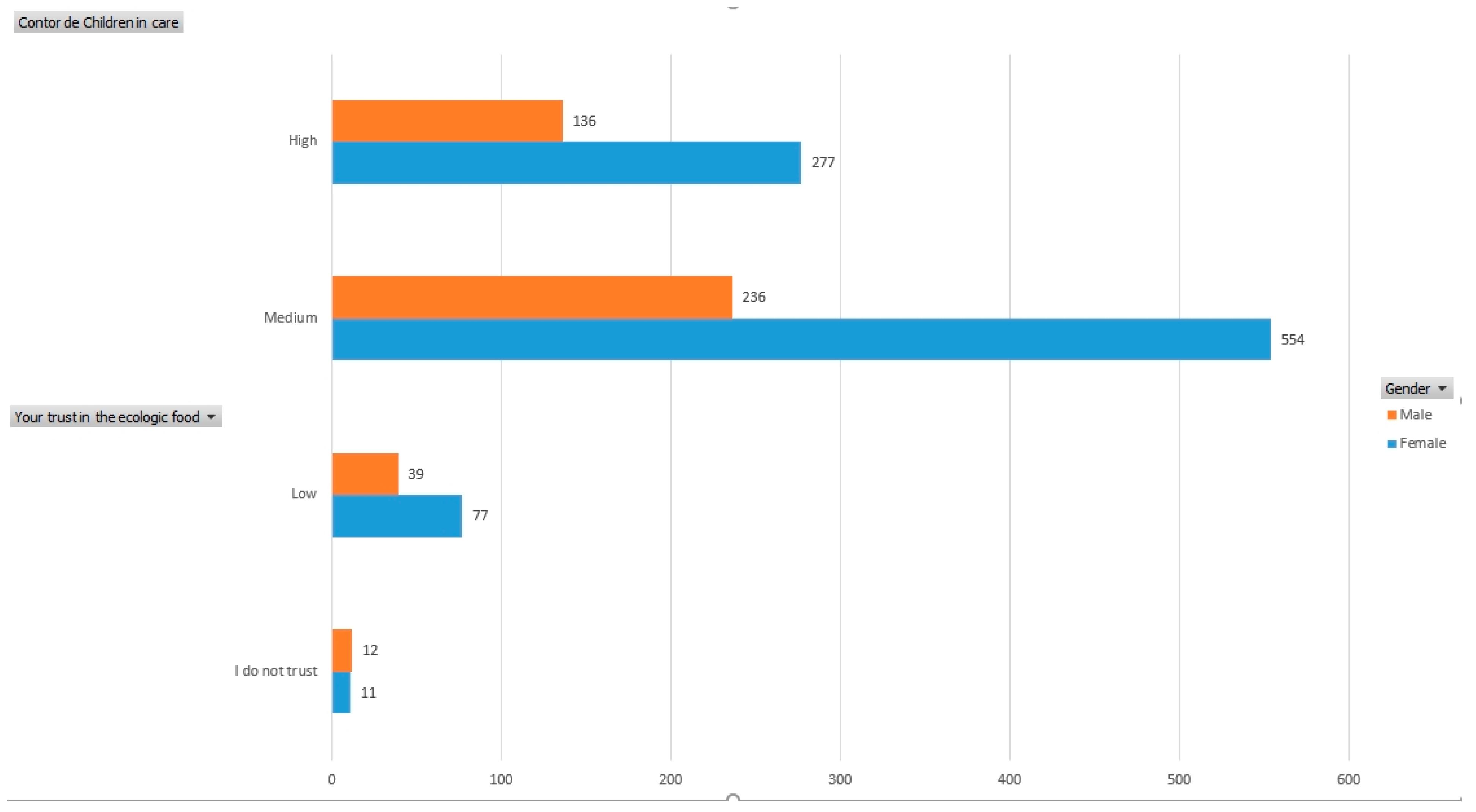
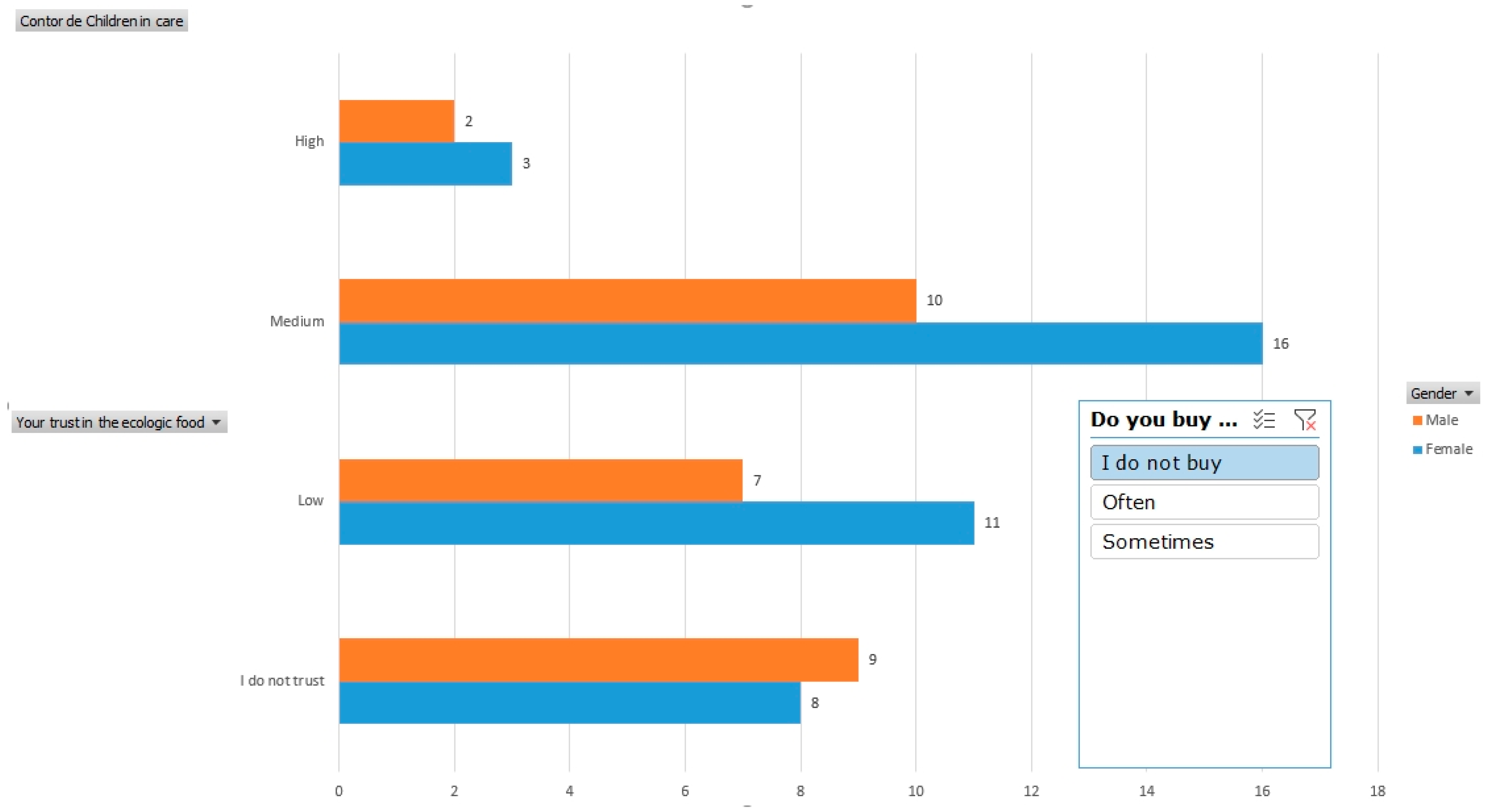
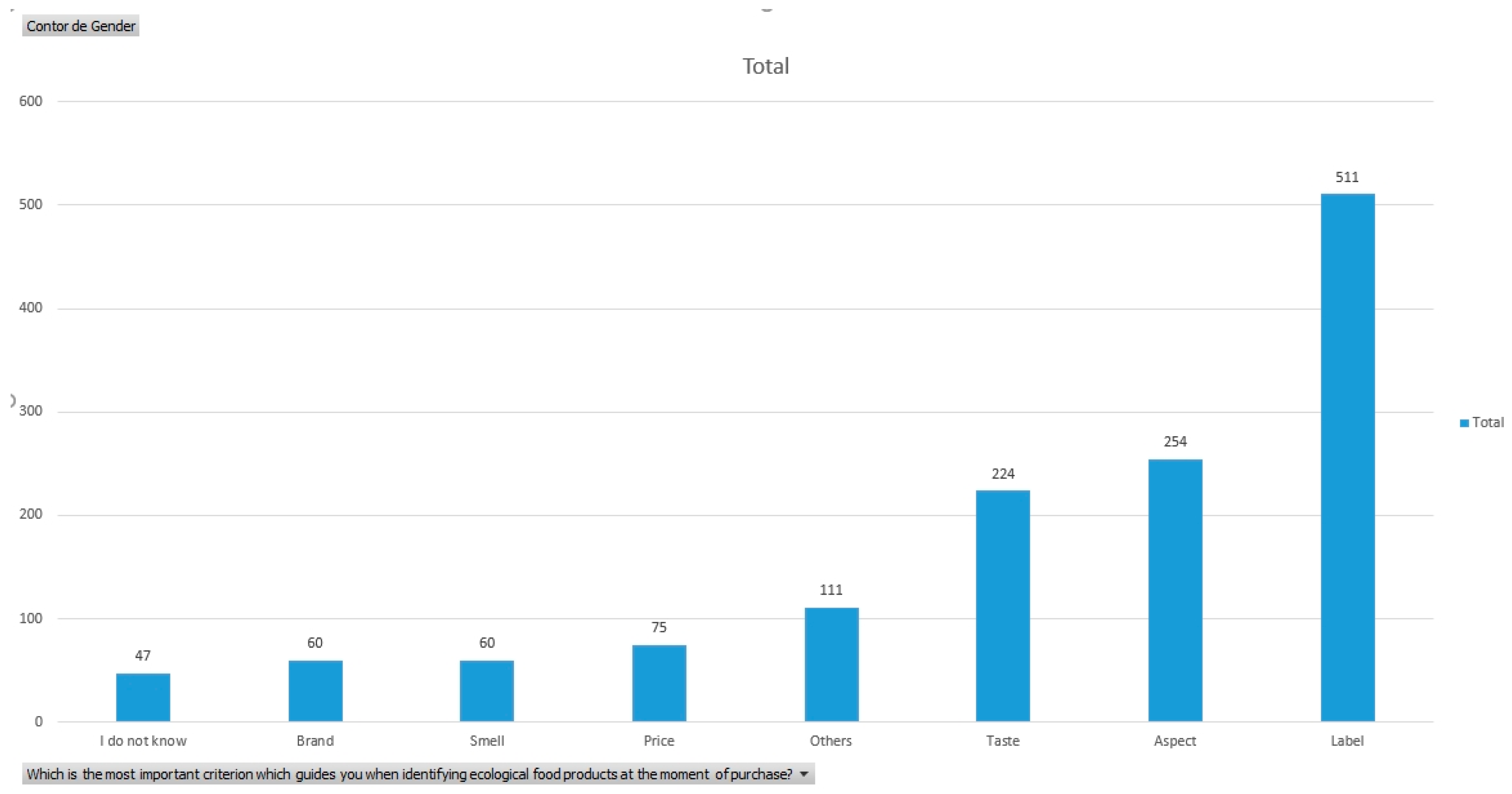
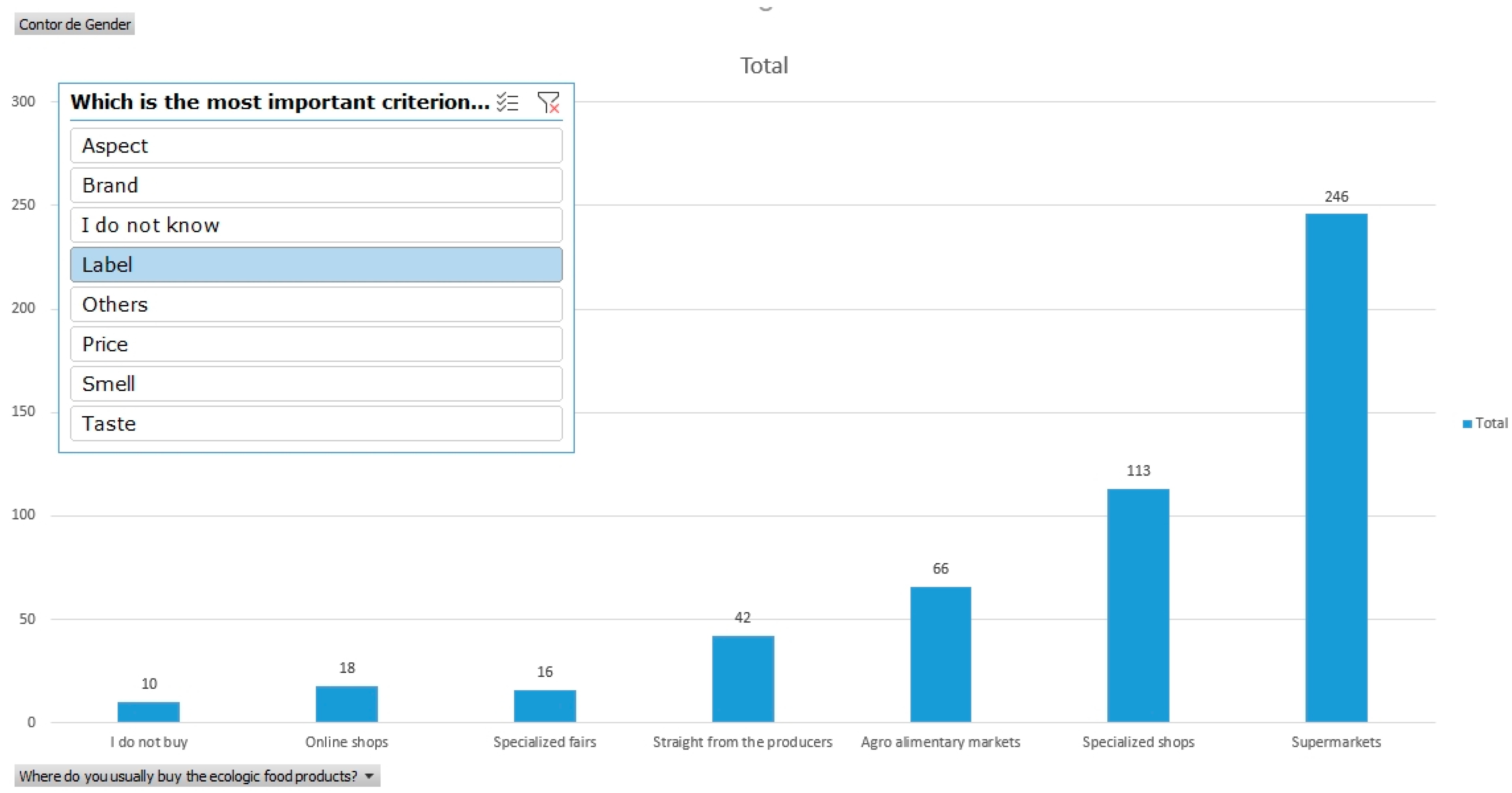
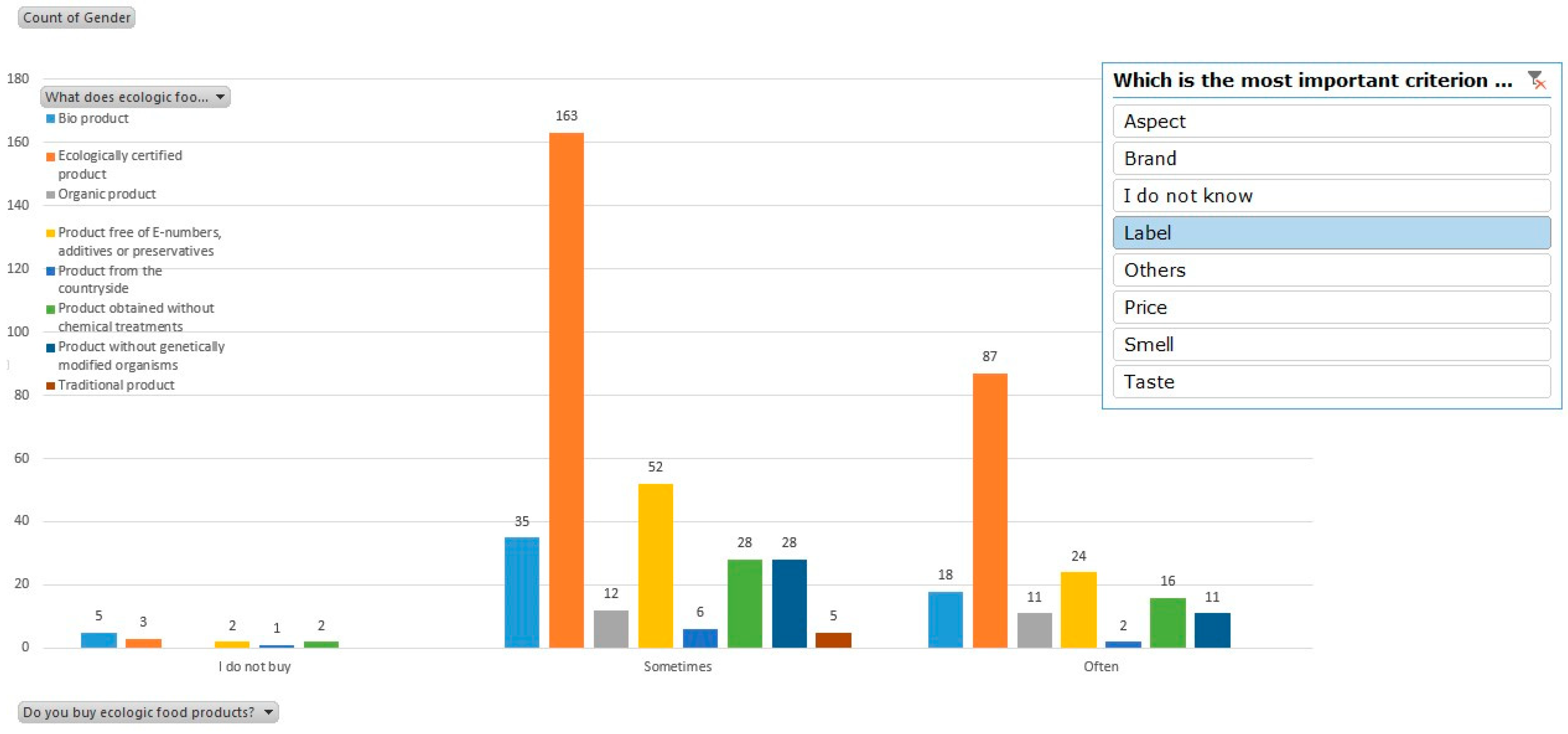
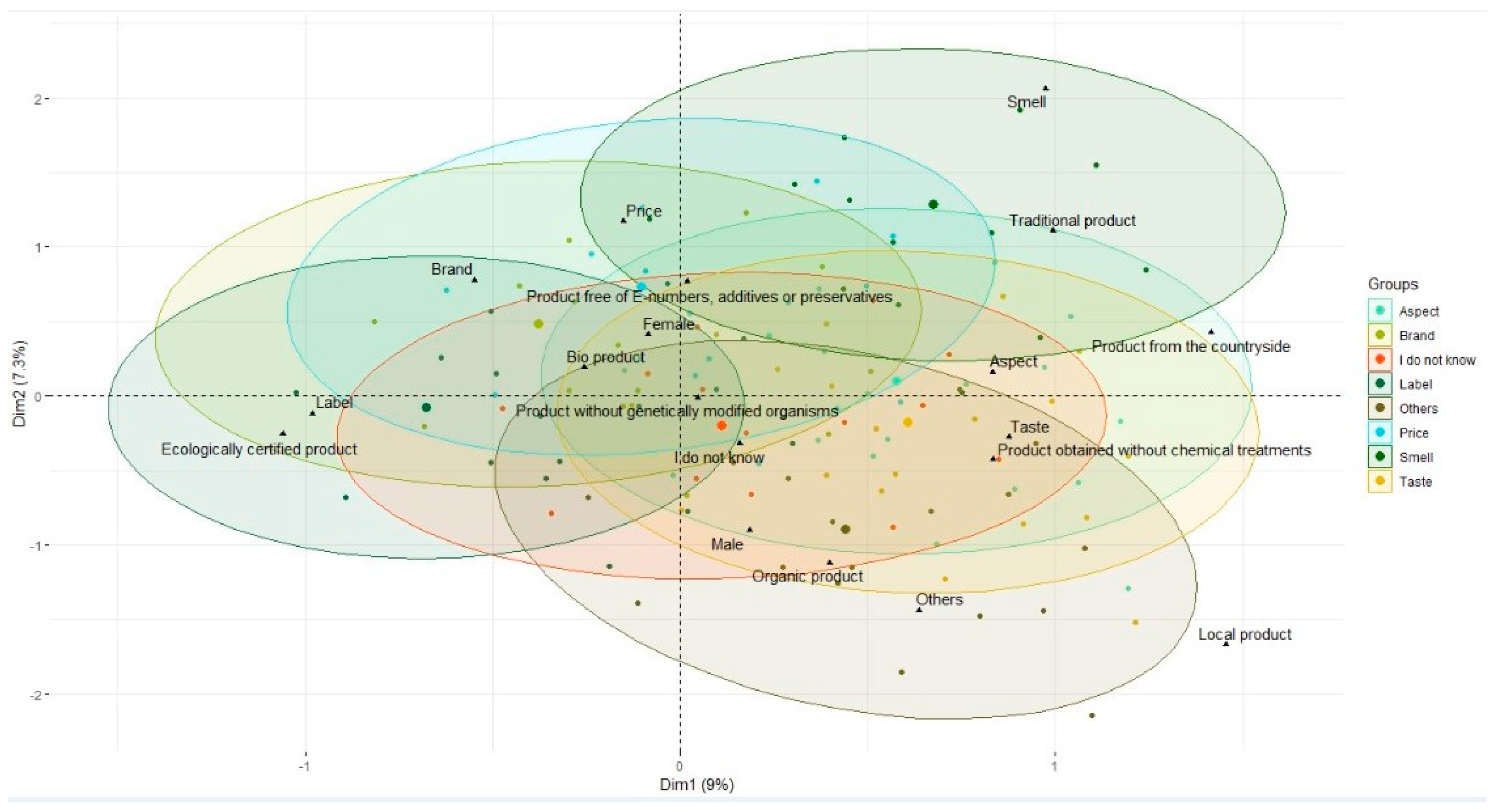
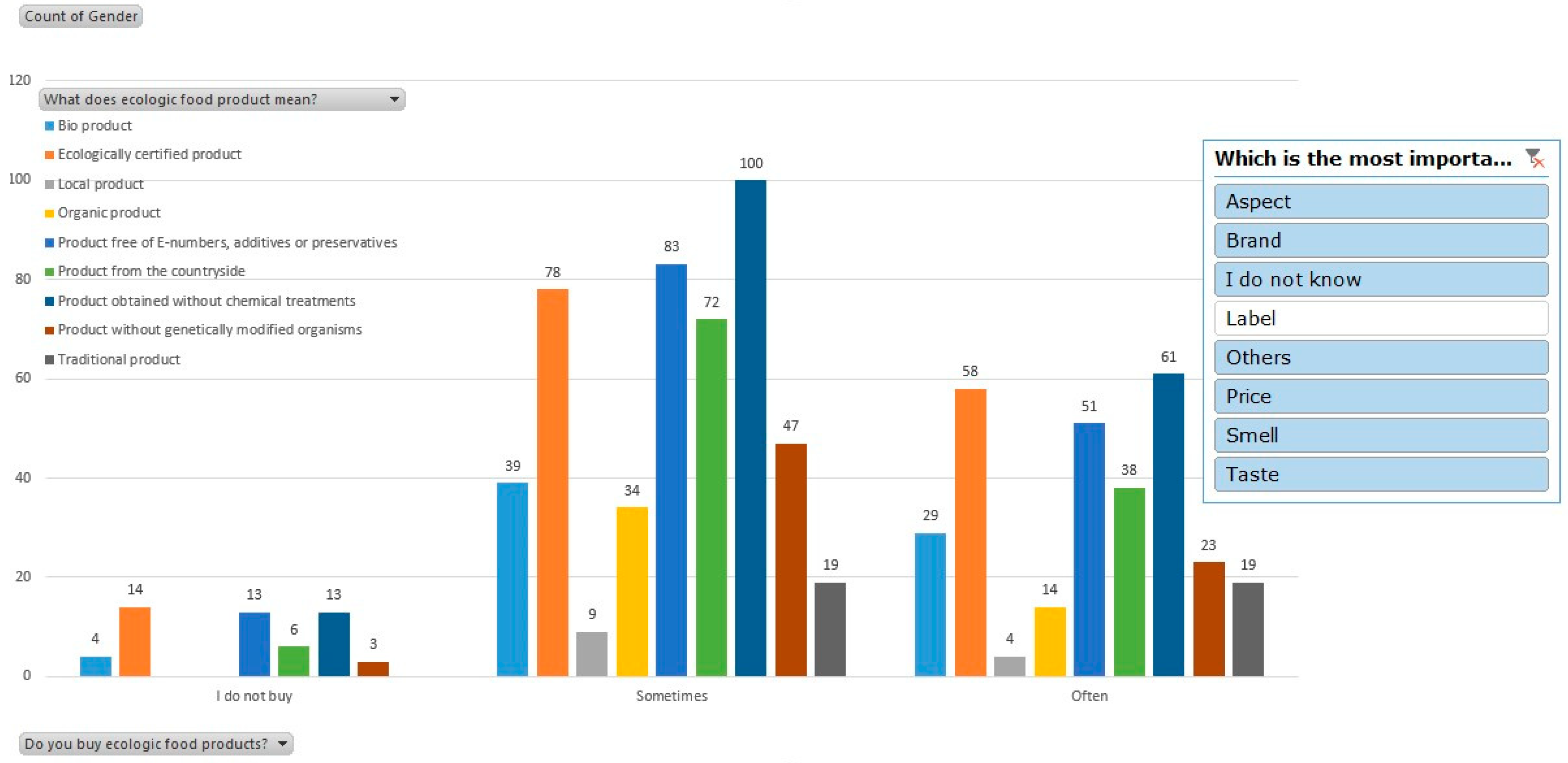
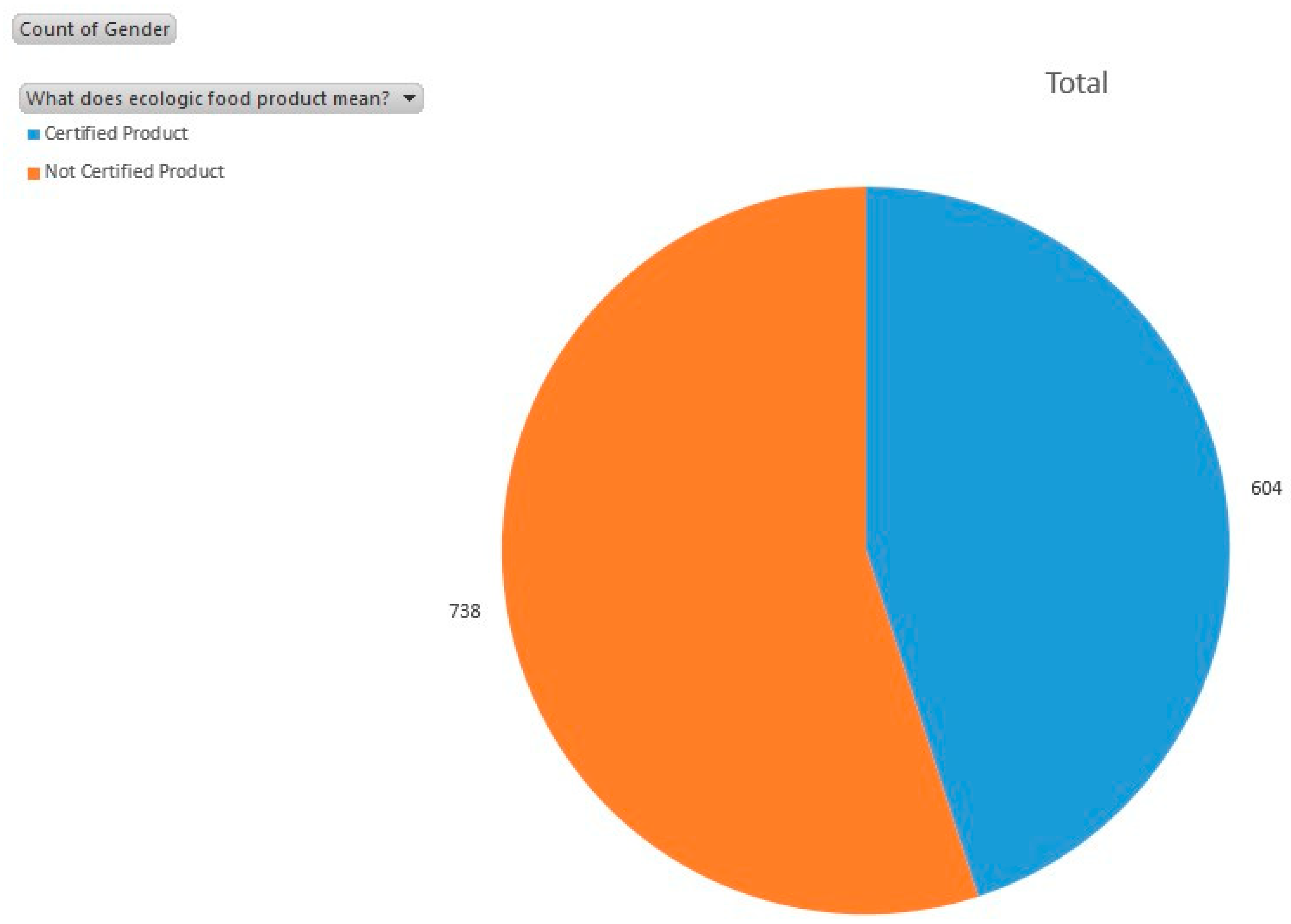
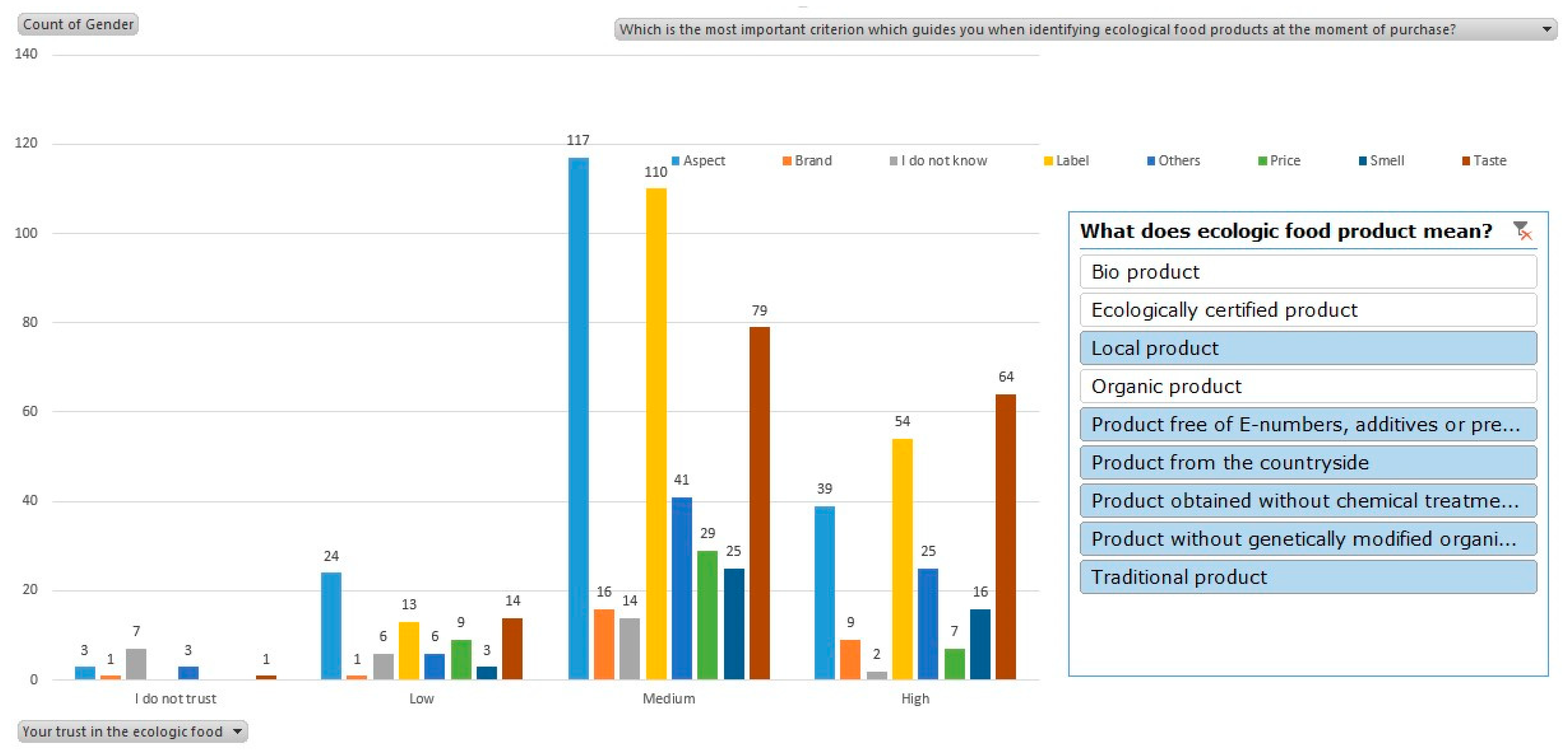
| Products Categories | MU | Average Consumption | |
|---|---|---|---|
| Total Households | Urban Households | ||
| Bread and bakery products | kg | 8.216 | 7.723 |
| Maize flour | kg | 0.804 | 0.539 |
| Fresh meat | kg | 3.482 | 3.640 |
| Preparations of meat | kg | 1.166 | 1.187 |
| Fish, fish products and tinned fish | kg | 0.722 | 0.768 |
| Milk | l | 5.743 | 5.618 |
| Dairy products | kg | 1.398 | 1.458 |
| Eggs | pieces | 13.463 | 13.112 |
| Maize, sunflower and soya oil | kg | 0.886 | 0.905 |
| Fruit | kg | 3.862 | 4.374 |
| Potatoes | kg | 3.087 | 3.008 |
| Vegetables and tinned vegetables in equivalent fresh vegetables, total | kg | 7.835 | 7.950 |
| Tomatoes | kg | 1.089 | 1.192 |
| Sugar | kg | 0.742 | 0.739 |
| Honey | kg | 0.080 | 0.095 |
| Wine | l | 0.887 | 0.632 |
| Beer | l | 1.4295 | 1.441 |
| Monthly Family Income in Lei | Monthly Family Income in Euros | Comfort Level | Total | Married | Single |
|---|---|---|---|---|---|
| Up to 800 Lei | Up to 178 Euros | Very low | 58 | 11 | 47 |
| 801–1500 Lei | Between 178 and 334 Euros | Low | 148 | 42 | 106 |
| 1500–2500 Lei | Between 334 and 556 Euros | Medium | 194 | 137 | 157 |
| 2501–4000 Lei | Between 556 and 890 Euros | Over medium | 385 | 241 | 144 |
| Over 4000 Lei | Over 890 Euros | High | 449 | 333 | 116 |
© 2019 by the authors. Licensee MDPI, Basel, Switzerland. This article is an open access article distributed under the terms and conditions of the Creative Commons Attribution (CC BY) license (http://creativecommons.org/licenses/by/4.0/).
Share and Cite
Butu, A.; Vasiliu, C.D.; Rodino, S.; Brumă, I.-S.; Tanasă, L.; Butu, M. The Process of Ethnocentralizing the Concept of Ecological Agroalimentary Products for the Romanian Urban Consumer. Sustainability 2019, 11, 6226. https://doi.org/10.3390/su11226226
Butu A, Vasiliu CD, Rodino S, Brumă I-S, Tanasă L, Butu M. The Process of Ethnocentralizing the Concept of Ecological Agroalimentary Products for the Romanian Urban Consumer. Sustainability. 2019; 11(22):6226. https://doi.org/10.3390/su11226226
Chicago/Turabian StyleButu, Alina, Codrin Dinu Vasiliu, Steliana Rodino, Ioan-Sebastian Brumă, Lucian Tanasă, and Marian Butu. 2019. "The Process of Ethnocentralizing the Concept of Ecological Agroalimentary Products for the Romanian Urban Consumer" Sustainability 11, no. 22: 6226. https://doi.org/10.3390/su11226226
APA StyleButu, A., Vasiliu, C. D., Rodino, S., Brumă, I.-S., Tanasă, L., & Butu, M. (2019). The Process of Ethnocentralizing the Concept of Ecological Agroalimentary Products for the Romanian Urban Consumer. Sustainability, 11(22), 6226. https://doi.org/10.3390/su11226226










